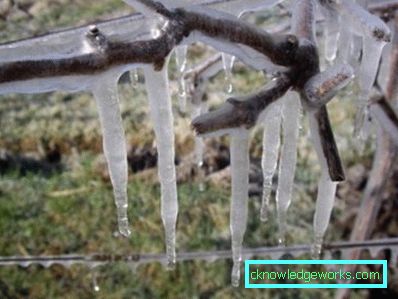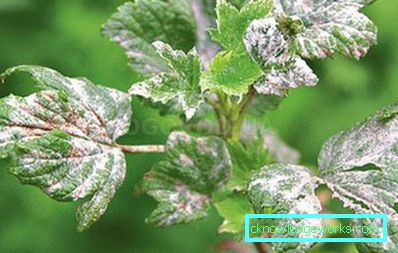Black currant leningrad giant
Currant Leningrad giant
Leningrad Giant is a very old Soviet variety, obtained at the Leningrad Agricultural Institute by plant breeders Glebova and Potashova. In 1974, the Leningrad giant was zoned in 3 regions of the Non-Black Earth Region. Currently, it is not in the State Register, seedlings can be found only from collectors.


Variety description
Currant Leningrad giant mid-ripening. Bushes are straight-growing, high, with fruiting become sprawling. The young growth is thick, the kidneys are also, thick and short, reddish in color, this is a distinctive feature of the variety. The berries are medium, round, black, shiny. The pulp is aromatic, juicy, tender, sweet-sour taste. Dessert variety, suitable for fresh consumption, processing, transportation, freezing.
- high yield - 3.5-4.0 kg / bush;
- berry weight 1.2-2.2 g;
- content of substances: sugar 7.1-12.7%; acid 2,4-7,5. Their content depends on weather conditions and technology of cultivation;
- The content of vitamin C is 155-254 mg / 100 g and is directly dependent on weather conditions.
Benefits.
- high winter hardiness;
- good yield;
- transportability;
- good taste;
- The Leningrad giant is resistant to anthracnose and is relatively resistant to kidney mite;
- resistant to terry
Disadvantages.
- lack of self-fertility;
- the variety is heavily affected by powdery mildew;
- demanding of growing conditions;
- flowers are badly damaged by spring frosts;
- branches often break under the weight of the crop.
Variety Leningrad giant labor-intensive in cultivation. To maintain the bushes in a healthy state requires regular preventive and therapeutic measures. In addition, the self-fertility of the variety is only 50%, and in order to obtain the yields declared by the originator, it is necessary to plant the pollinating varieties.
The name of the Leningrad Giant variety corresponded to its time. In the 70s, berries weighing 2 g were considered very large. Now almost all modern varieties have such a mass of fruits, therefore the berries of the Leningrad giant are now attributed to the average size.
Features of growing varieties Leningrad giant,
Leningrad giant, unlike most varieties of black currant, is very picky about agricultural technology.
Preparing a landing site
Leningrad giant requires very fertile soils. It grows equally badly on poor podzolic soils and on black soil. When planting currants in a radius of 2-3 meters bring rotten manure or humus, 2-3 buckets per m2. In the landing pits make 6-8 kg of organic matter and 2 tbsp. spoons of superphosphate.
Currant does not tolerate alkaline soils. If the earth is strongly alkaline, then the Leningrad giant simply will not grow; if it is slightly alkaline, it is alkalized. To do this, planting pits do a little deeper and make them high-moor peat, sawdust, pine litter, humus or fresh manure. Also, these components are scattered around the perimeter of the bushes, followed by embedding.


They alkalize the soil for a long time, but slowly enough. Therefore, if there is a possibility, the work should be carried out 1-2 years before planting currants. If this is not possible, the planting pits are prepared in the autumn, and the currants are planted in the spring. 10 kg of humus or 3 kg of fresh manure reduce soil pH by one.
Currant Care
The Leningrad giant is not self-fertile and it is necessary to plant pollinating varieties for better fruiting. Early and middle varieties are most suitable for these purposes: Selechenskaya and Selechenskaya 2, Viola, Openwork, Belorusskaya sweet, Barmalei.
In dry summer, the variety needs weekly heavy irrigation. Under a bush pour out 2-3 buckets of water. Also, if the soil is too acidic, after harvesting the bushes are watered with lime milk. To do this, 0.5 kg of lime is poured 7-10 liters of water and insist 1-2 days, occasionally stirring. Then the solution is filtered and introduced into the bushes, and the precipitate can be brought under the cabbage, or scattered on the free beds from which the harvest has already been harvested. If the earth is acidic, then it is acidic, not only under the currant, but throughout the site.
When alkaline soil for acidification of the bushes watered with a solution of ammonium nitrate, or iron sulphate. They are also fertilizers, and iron sulfate also protects plants from diseases.
Actions on alkalinization or deoxidation of the land under growing bushes are carried out once in 3 years.


Every year the variety is fed 2 times per season. During the filling of berries, the Leningrad giant is sprayed with a solution of any micronutrient. After harvesting make 1-2 tbsp. spoon superphosphate and potassium sulfate. If the summer is wet, then the fertilizers are buried around the perimeter of the bushes; if it is dry, then pour it with a solution of fertilizers. But if the soil is very poor, then in spring, when the leaves are blooming, fertilizing is carried out with nitrogen fertilizers, which are best applied in a liquid form.
The variety suffers greatly from both late spring and early summer frosts. There is a significant loss of damaged flowers and ovaries. In the case of prolonged frosts, you can generally remain without a crop.
To protect against freezing, currants are watered well the night before (2-3 buckets under a bush and along the crown's perimeter) and sprinkled with plenty of water. In the morning the branches, flowers and ovaries will be completely covered with ice. This saves them from death. The temperature inside the ice ball is 0 ° C, and for the Leningrad giant, temperatures of -2 ° C and below are detrimental.


It is possible to protect a currant from frosts by covering it with a covering material (lutarsil, spanbond) in several layers. Instead, you can use rags.
Often the shoots of this variety of currants do not withstand the severity of the crop and break. To prevent this, the branches are tied to a support (usually to the fence), or the bushes are connected. You can substitute for strongly leaning branches props.
Powdery mildew control
Mealy dew - the scourge of this variety of currants. Since the Leningrad giant is damaged every year, measures to prevent and treat the disease are carried out throughout the season. Folk remedies in this case are extremely weak and ineffective, so even prevention is carried out with the help of chemicals.
In early spring, before bud break, a “blue” sprinkling of the garden, including currants, is carried out. Before flowering sprayed with preparations HOM, Ordan, further processing is carried out every 2 weeks, alternating preparations. Spraying stopped for 20 days before harvest. These drugs are more suitable for the prevention of the disease. For the treatment of powdery mildew, they should be alternated with systemic fungicides.
If powdery mildew still appeared on the currant, then they make treatments with colloidal sulfur (the preparation Tiovit Jet) or systemic fungicides (Vectra, Topaz, Raek). Sulfur can be sprayed currants 3 days before harvest. Fungicides are used no later than 3 weeks before picking berries. Spend at least 2 treatments, alternating drugs.


The Leningrad giant was very good for its time. Now he has lost relevance. Its essential shortcomings have nullified all its advantages. Now there are so many varieties that exceed it in all respects.